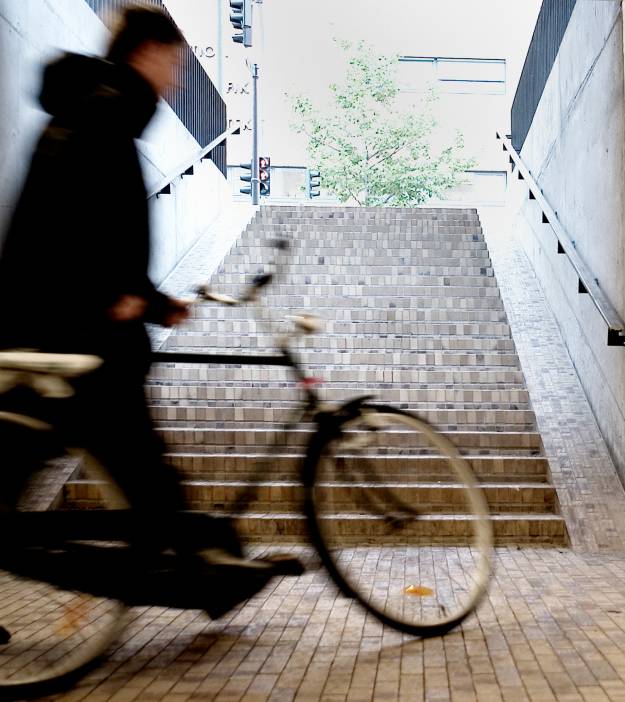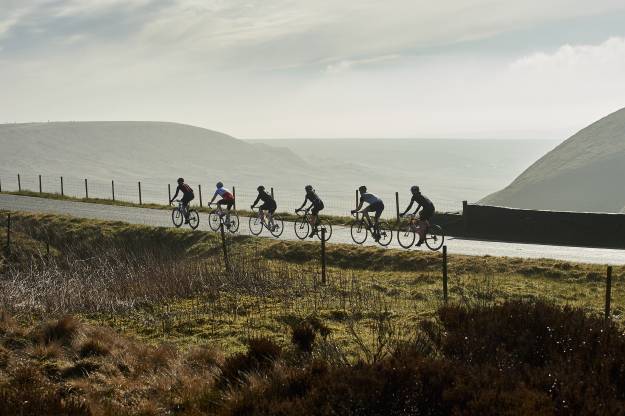A simple amendment to the Highway Code and regulations to give priority to people walking, cycling or driving straight ahead could reduce motor traffic queue lengths by 43%, new research from British Cycling has today revealed.
The research, commissioned by British Cycling and undertaken by leading transport planners Phil Jones Associates, also showed that the rule changes would reduce the amount of time all road users spend navigating a typical set of traffic lights with delays reduced by 23% for motor vehicles, 38% for pedestrians and 21% for cyclists.
How it works (swipe left to view gallery)
A post shared by British Cycling (@britishcycling) onJun 27, 2017 at 2:20am PDT
British Cycling’s Turning the Corner campaign – launched in December 2016 – which aims to make junctions simpler, safer and more efficient was created after research by the governing body showed that the UK is one of just three countries in the world who do not have a priority rule at traffic light junctions.
Two-thirds of all collisions in the UK currently take place at junctions. In early 2017, 27,000 people signed a petition to get the Highway Code amended with 5,500 people writing to their local MP.
British Cycling’s policy adviser, Chris Boardman, said:
“Simple changes to the Highway Code and regulations would not only make junctions safer spaces for all road users, it would also make them much more efficient, saving lots of time. The time saved at this single junction amounts to around six hours every year for regular car commuters – that’s a whole season of Line of Duty - and would reduce exhaust emissions by 17%.
“Beginning the process of changing these rules to bring us in the line with the rest of the world would not be an onerous task – it is simply a case of updating the Highway Code and is something that the Transport Secretary could action tomorrow.”
Policy advocate Dame Sarah Storey added: “If you are new to driving or cycling in the UK, our junctions can be really confusing and dangerous spaces to navigate.
"We’re about 50 years behind most other countries in the world in solving this and it staggers me that our government is still dragging its feet. Bringing in this rule change is a no-brainer and I hope this research goes some way to educating decision makers on the way forward.”
The research was based on traffic data for the Lea Bridge Road/Orient Way junction in Waltham Forest, Greater London. The time saving and reduction in queuing can be largely attributed to rule changes which would enable moving from a three-stage traffic light sequence to a two stage sequence (allowing pedestrians, cyclists and motor vehicles to all go in the same stage).
The award-winning Enjoy Waltham Forest project is one of three of Transport for London Mini-Holland schemes which each received £30 million to develop cycling networks, routes and to improve streets for everyone.
Director of highways and traffic management at Waltham Forest Council, Vala Valavan said: “We want to make it easier for everyone to travel no matter if you are driving, walking, cycling or taking the bus but the current rules at junctions make it difficult to maintain vehicle capacity. The results of this model show that it is possible to improve the efficiency of junctions and at the same time provide traffic protected routes for people walking and cycling.
“We hope that further research can be undertaken to show how it could work and meet the needs of all road users.”













